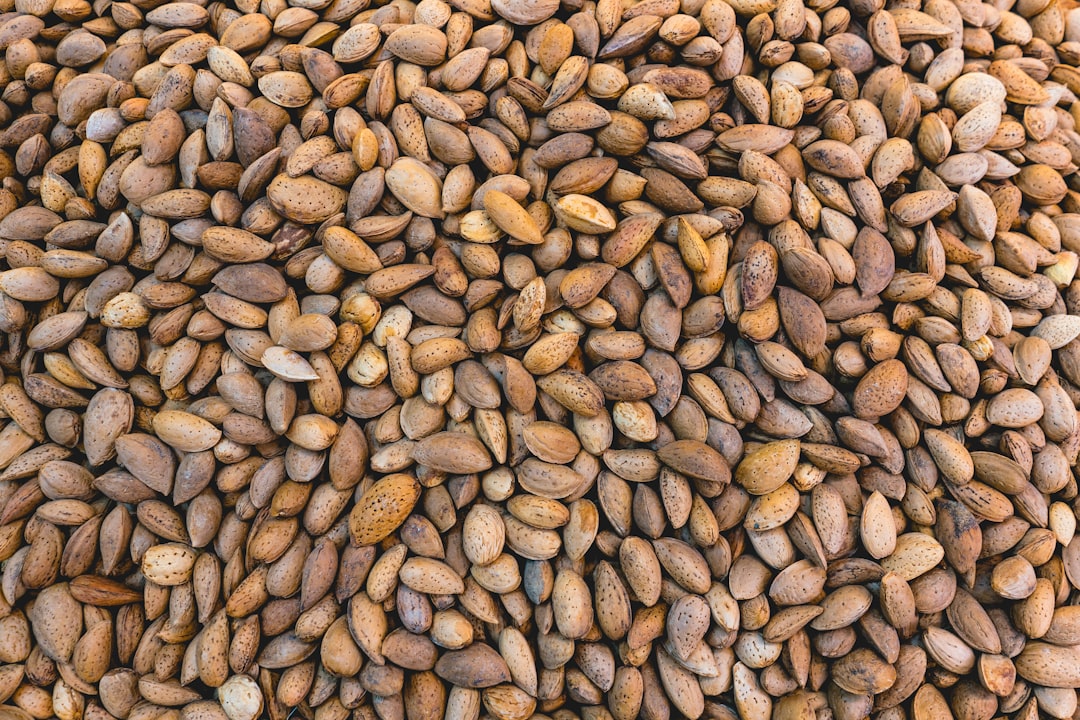When it comes to nutrition, protein is often hailed as a cornerstone of a healthy diet. However, not all proteins are created equal. The quality of protein you consume can significantly impact your overall health, muscle development, and recovery.
High-quality proteins contain all the essential amino acids your body needs to function optimally, while lower-quality proteins may lack one or more of these vital components. Understanding protein quality is crucial for making informed dietary choices, especially if you are an athlete, bodybuilder, or someone looking to improve your overall health. Incorporating high-quality protein sources into your diet can enhance muscle synthesis, support immune function, and promote overall well-being.
As you navigate your nutritional journey, recognizing the importance of protein quality will empower you to select foods that not only satisfy your hunger but also provide the necessary building blocks for your body. This understanding can lead to better health outcomes and improved physical performance, making it essential to prioritize protein quality in your daily meals.
Key Takeaways
- Protein quality is important for overall health and well-being
- PDCAAS is a method used to measure the quality of protein in food
- PDCAAS is calculated by comparing the amino acid profile of a protein to a reference protein
- Essential amino acids play a crucial role in determining the PDCAAS of a protein
- PDCAAS can be used to compare the quality of different protein sources and inform dietary choices
What is PDCAAS?
The Protein Digestibility-Corrected Amino Acid Score (PDCAAS) is a widely recognized method for evaluating protein quality. It takes into account both the amino acid profile of a protein source and its digestibility, providing a comprehensive assessment of how well a protein can meet your body’s needs. PDCAAS scores range from 0 to 1.0, with a score of 1.0 indicating that a protein source contains all essential amino acids in sufficient quantities and is easily digestible.
This scoring system is particularly useful for comparing different protein sources and determining their suitability for various dietary needs. Understanding PDCAAS is essential for anyone looking to optimize their protein intake. Whether you are a fitness enthusiast aiming to build muscle or someone simply trying to maintain a balanced diet, knowing the PDCAAS of the proteins you consume can help you make better choices.
By focusing on high-PDCAAS foods, you can ensure that you are getting the most nutritional value from your meals, ultimately supporting your health and fitness goals.
How is PDCAAS Calculated?

Calculating PDCAAS involves a two-step process that assesses both the amino acid composition of a protein source and its digestibility. First, the amino acid profile of the protein is compared to a reference pattern established by the World Health Organization (WHO). This reference pattern outlines the ideal proportions of essential amino acids required for human health.
The lowest score obtained from this comparison indicates the limiting amino acid, which is the amino acid present in the least amount relative to the reference pattern. The second step in calculating PDCAAS involves evaluating the digestibility of the protein source. This is typically determined through animal studies that measure how much of the protein is absorbed and utilized by the body.
The digestibility score is then multiplied by the limiting amino acid score to yield the final PDCAAS value. This comprehensive approach ensures that both the quality and availability of the protein are taken into account, providing a reliable measure of its nutritional value.
The Role of Essential Amino Acids in PDCAAS
| Amino Acid | PDCAAS Score |
|---|---|
| Lysine | 1.0 |
| Tryptophan | 1.0 |
| Methionine | 1.0 |
| Leucine | 1.0 |
| Isoleucine | 1.0 |
| Valine | 1.0 |
Essential amino acids play a pivotal role in determining the PDCAAS of a protein source. These amino acids cannot be synthesized by your body and must be obtained through your diet.
When evaluating protein quality using PDCAAS, it is essential to consider not only the presence of these amino acids but also their relative proportions. A protein source with a balanced profile of essential amino acids will score higher on the PDCAAS scale than one that lacks certain amino acids. For instance, animal-based proteins such as eggs and whey typically have higher PDCAAS scores due to their complete amino acid profiles.
In contrast, many plant-based proteins may be lower in one or more essential amino acids, which can affect their overall quality. Understanding the role of essential amino acids in PDCAAS can help you make informed choices about your protein sources and ensure that you are meeting your nutritional needs.
Comparing Protein Quality Using PDCAAS
When it comes to comparing different protein sources, PDCAAS serves as a valuable tool for assessing their quality. By examining the PDCAAS scores of various foods, you can easily identify which proteins will provide the most benefit for your dietary goals. For example, whey protein has a PDCAAS score of 1.0, making it one of the highest-quality protein sources available.
In contrast, some plant-based proteins like certain legumes may have lower scores due to their incomplete amino acid profiles. This comparison becomes particularly important when planning meals or designing a diet tailored to specific needs. If you are vegetarian or vegan, understanding which plant-based proteins have higher PDCAAS scores can help you create balanced meals that provide all essential amino acids.
By incorporating a variety of high-PDCAAS foods into your diet, you can ensure that you are getting adequate protein quality while still adhering to your dietary preferences.
Limitations of PDCAAS

While PDCAAS is a widely used method for assessing protein quality, it does have its limitations. One significant drawback is that it does not account for certain factors that can influence protein utilization in humans, such as individual digestive efficiency and variations in metabolism. Additionally, PDCAAS does not consider the presence of non-protein nitrogen compounds that may affect overall protein quality.
Another limitation is that PDCAAS scores can sometimes be misleading when comparing different types of proteins. For instance, some plant-based proteins may have lower PDCAAS scores due to their limiting amino acids but still offer other health benefits such as fiber and antioxidants. Therefore, while PDCAAS provides valuable information about protein quality, it should not be the sole factor guiding your dietary choices.
A holistic approach that considers other nutritional aspects is essential for achieving optimal health.
Applications of PDCAAS in Nutrition
PDCAAS has numerous applications in nutrition, particularly in formulating dietary guidelines and recommendations for various populations. Nutritionists and dietitians often use PDCAAS scores to assess the adequacy of protein intake in different demographic groups, including children, athletes, and older adults. By understanding which protein sources offer the highest quality, professionals can tailor dietary plans that meet specific needs and promote overall health.
Moreover, PDCAAS can be instrumental in developing food products and supplements aimed at enhancing protein intake. Manufacturers often use PDCAAS scores to market their products as high-quality protein sources, appealing to consumers who prioritize nutrition in their purchasing decisions. As awareness of protein quality continues to grow, understanding PDCAAS will become increasingly important for both consumers and industry professionals alike.
PDCAAS and Protein Supplements
The rise in popularity of protein supplements has made it essential to evaluate their quality using metrics like PDCAAS. Many individuals turn to these supplements to meet their protein needs conveniently; however, not all supplements are created equal in terms of quality. By examining the PDCAAS scores of various protein powders—such as whey, casein, soy, and pea—you can make informed choices about which products will best support your health and fitness goals.
When selecting a protein supplement, consider not only its PDCAAS score but also other factors such as taste, digestibility, and any additional ingredients it may contain. A high-PDCAAS supplement may provide excellent amino acid profiles but could also include added sugars or artificial flavors that detract from its overall nutritional value. By taking a comprehensive approach to evaluating protein supplements through the lens of PDCAAS and other criteria, you can find products that align with your dietary preferences and health objectives.
PDCAAS and Food Labeling
As consumers become more health-conscious, food labeling has evolved to include detailed nutritional information about products. Understanding PDCAAS can help you interpret these labels more effectively when it comes to assessing protein quality. Some manufacturers may highlight their product’s PDCAAS score on packaging or marketing materials as a way to demonstrate its superiority over competitors.
However, it’s important to approach these claims with a critical eye. While a high PDCAAS score indicates good protein quality, it should not be the only factor influencing your purchasing decisions. Look for additional information on ingredient sourcing, processing methods, and overall nutritional content to ensure that you are making well-rounded choices for your diet.
PDCAAS and Dietary Guidelines
Dietary guidelines often emphasize the importance of consuming adequate amounts of high-quality protein for optimal health. Organizations such as the World Health Organization (WHO) and the Food and Agriculture Organization (FAO) utilize metrics like PDCAAS when developing recommendations for protein intake across different populations. These guidelines help inform individuals about how much protein they should consume daily and which sources are most beneficial.
By adhering to these guidelines and focusing on high-PDCAAS foods, you can ensure that you are meeting your nutritional needs while supporting overall health and wellness. Whether you’re an athlete looking to enhance performance or someone simply aiming for a balanced diet, understanding how PDCAAS fits into dietary recommendations will empower you to make informed choices about your protein intake.
Future Research and Developments in PDCAAS
As nutrition science continues to evolve, so too does our understanding of protein quality and its measurement through methods like PDCAAS. Future research may explore new ways to assess protein digestibility and utilization more accurately in humans, potentially leading to refined scoring systems that better reflect real-world conditions. Additionally, studies may investigate how different cooking methods or food combinations affect the bioavailability of proteins.
Moreover, as plant-based diets gain popularity, there may be increased interest in developing new plant-based proteins with improved amino acid profiles and higher PDCAAS scores. This could lead to innovative food products that cater to diverse dietary preferences while still providing high-quality nutrition. By staying informed about advancements in this field, you can continue to make educated choices about your protein sources and overall dietary habits.
In conclusion, understanding protein quality through metrics like PDCAAS is essential for optimizing your nutrition and achieving your health goals. By prioritizing high-quality proteins in your diet and staying informed about developments in this area, you can ensure that you are providing your body with the necessary building blocks for optimal health and performance.
Protein quality is a crucial aspect of nutrition, especially when considering dietary needs for different age groups. One way to measure protein quality is through the Protein Digestibility Corrected Amino Acid Score (PDCAAS), which evaluates a protein’s amino acid profile and its digestibility. For those interested in understanding more about how protein quality impacts health, particularly in senior populations, an insightful article can be found on the Explore Senior Health website. This article delves into various aspects of nutrition and health for seniors, providing valuable information on maintaining a balanced diet. You can read more about it by visiting this page.
WATCH THIS!🧠 The Breakfast Mistake That Fuels Senior Memory Loss
FAQs
What is PDCAAS?
PDCAAS stands for Protein Digestibility Corrected Amino Acid Score. It is a method of evaluating the quality of a protein based on its amino acid profile and digestibility.
How is PDCAAS calculated?
PDCAAS is calculated by multiplying the amino acid score of the protein by its digestibility score. The amino acid score is determined by comparing the levels of essential amino acids in the protein to a reference pattern, while the digestibility score is determined through human feeding studies.
What is considered a high-quality protein based on PDCAAS?
A protein with a PDCAAS score of 1.0 is considered to be of the highest quality, as it provides all essential amino acids in the amounts needed by the human body.
Why is PDCAAS important?
PDCAAS is important because it provides a standardized method for comparing the quality of different protein sources. This can be useful for formulating balanced diets and assessing the nutritional value of food products.
What are some examples of proteins with high PDCAAS scores?
Proteins from animal sources such as eggs, milk, and meat typically have high PDCAAS scores. Additionally, soy protein and quinoa are examples of plant-based proteins with high PDCAAS scores.
